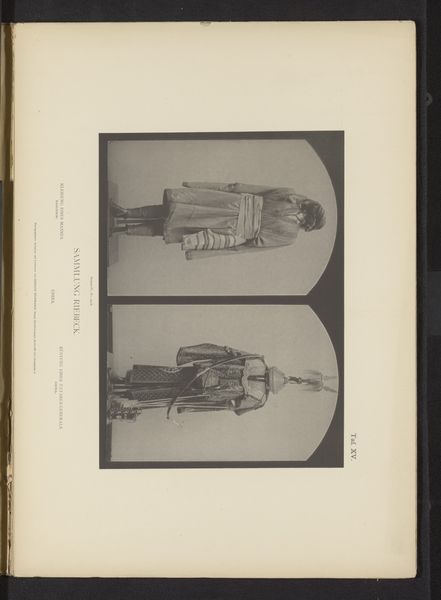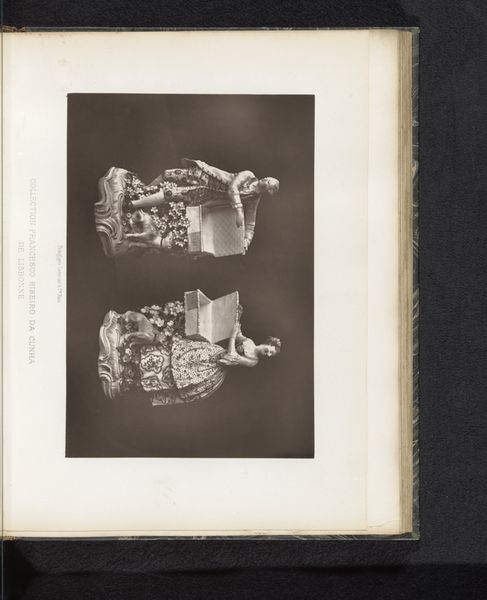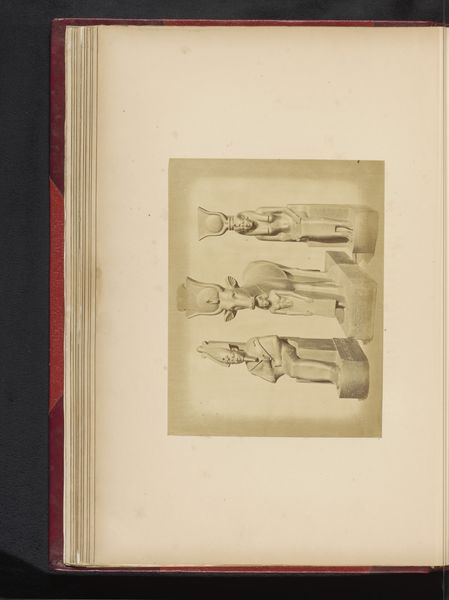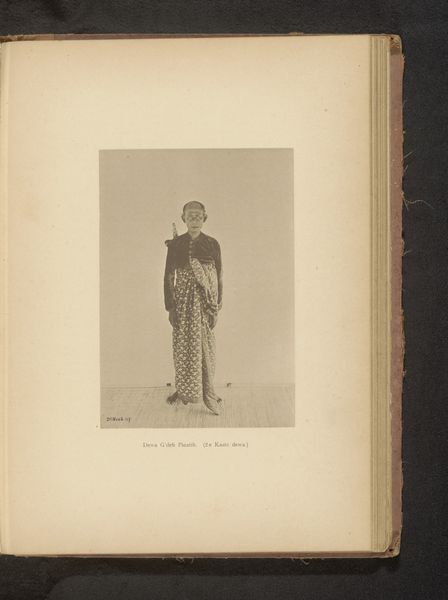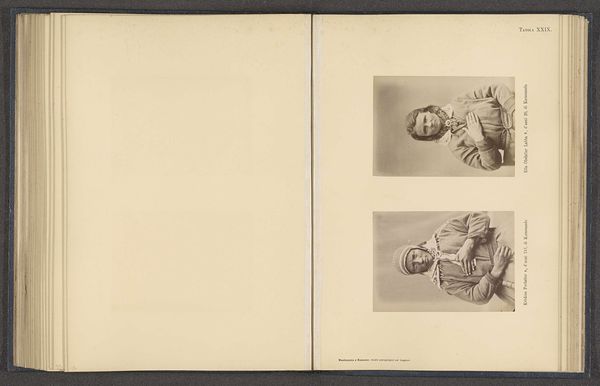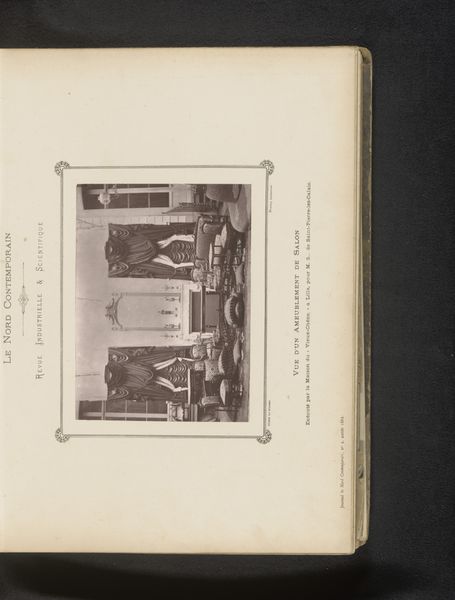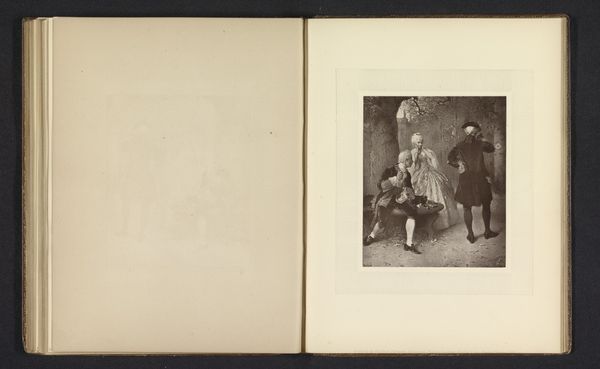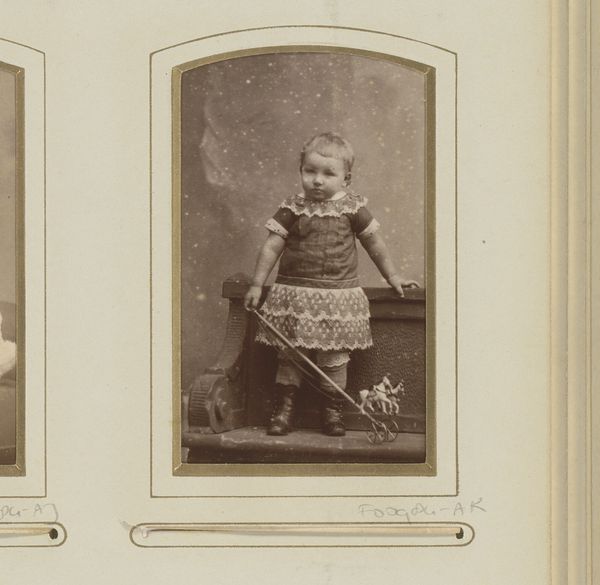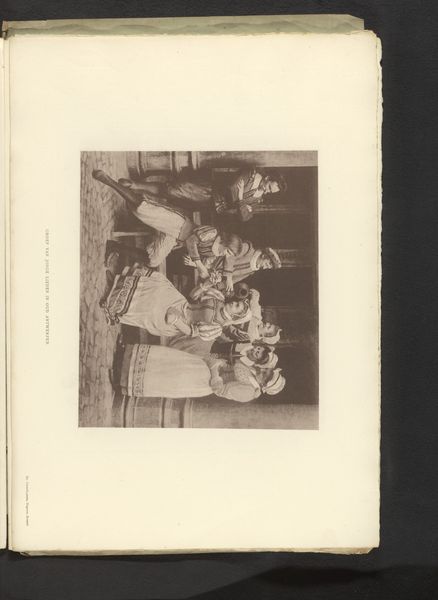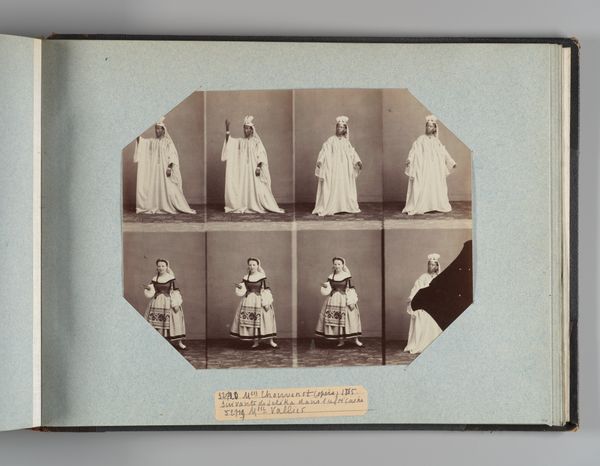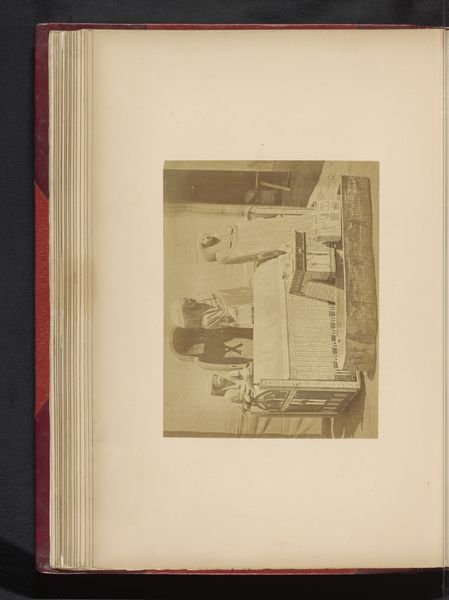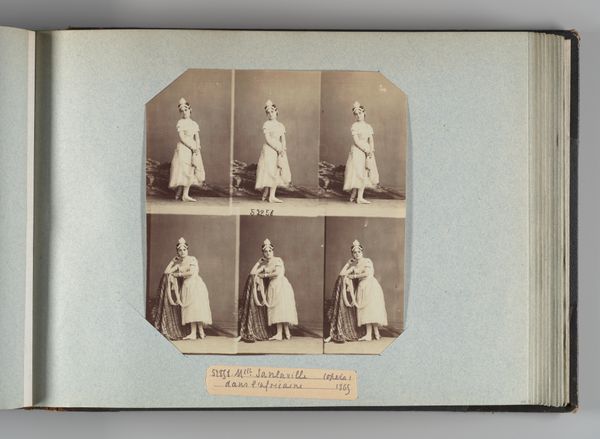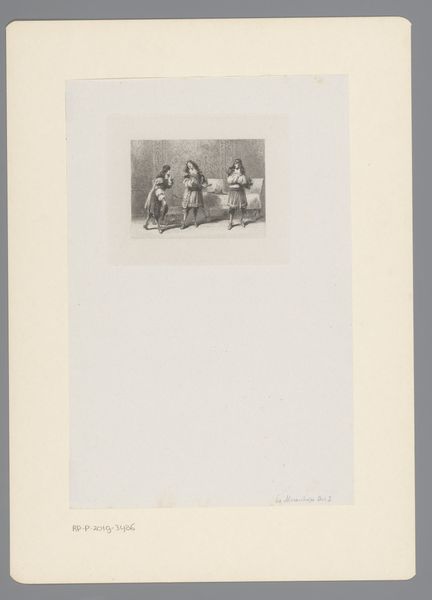
Twee Japanse wapenuitrustingen uit de verzameling van Emil Riebeck, op de binnenplaats van het Kunstgewerbemuseum in Berlijn 1884
0:00
0:00
#
aged paper
#
toned paper
#
homemade paper
#
ink paper printed
#
sketch book
#
personal sketchbook
#
sketchbook drawing
#
paper medium
#
sketchbook art
#
historical font
Dimensions: height 223 mm, width 313 mm
Copyright: Rijks Museum: Open Domain
Curator: Here we have a page from Hermann Rückwardt's sketchbook, dating back to 1884. It's titled, "Twee Japanse wapenuitrustingen uit de verzameling van Emil Riebeck, op de binnenplaats van het Kunstgewerbemuseum in Berlijn" which translates to "Two Japanese armours from the collection of Emil Riebeck, in the courtyard of the Kunstgewerbemuseum in Berlin." Editor: Wow, it’s faded, yet incredibly crisp. I get a real sense of solemn observation here, as if Rückwardt was capturing more than just the armour. Almost like he was absorbing its stories. Curator: Rückwardt's approach is fascinating because he documented the material culture being assembled in Berlin at this time. These sketches are not just records; they point to the global flow of goods, and Riebeck's private collecting habits, all captured on a single page. The means of production and ownership are front and center. Editor: You know, I can almost hear the faint echoes of metal clanking on stone, imagining the armours displayed out in the courtyard, vulnerable, almost naked in a way, divorced from their original context. There's something strangely haunting about seeing these powerful objects reduced to mere study subjects. Curator: And that’s where the crux lies isn’t it? Riebeck, an ethnographer and natural scientist, gathered objects and human remains from around the world. This page documents the spoils of colonial expansion that formed the base of Berlin’s collections. Editor: It hits differently now, knowing the context. It taints the beauty, makes me question the act of observing, even. Were these armours seen as beautiful objects or as trophies of power? Maybe it’s both, the way beauty and conquest can be twisted together. Curator: Exactly. The sketch serves as a poignant artifact, a visual shorthand to consider our relationship to historical objects and collections. It underscores a much bigger discussion regarding the movement of cultural goods and their afterlives in museum contexts. Editor: Makes you wonder about all the hidden stories embedded in the everyday objects around us. Every thing tells a tale if you're willing to listen.
Comments
No comments
Be the first to comment and join the conversation on the ultimate creative platform.
